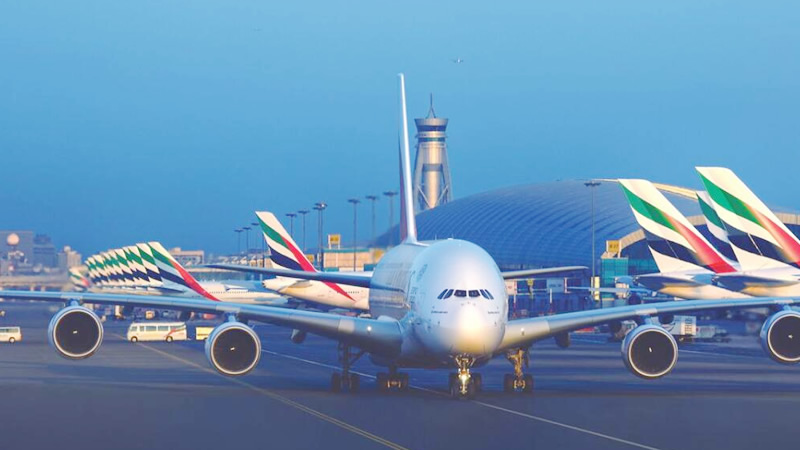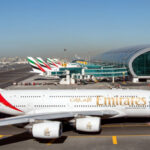
Dubai, the glittering city in the United Arab Emirates, is set to become a major beneficiary of the anticipated growth in global air travel, a recent study by Emirates NBD Research indicates. The city, known for its opulent lifestyle and towering skyscrapers, has steadily bolstered its aviation sector, emerging as a key driver of its economic expansion.
The study highlights that global air travel has experienced an impressive annual passenger growth of 5.4% from 1974 to 2019, outstripping global population growth. Factors contributing to this surge include increased disposable incomes and a decline in the real cost of air travel. Despite a significant dip in 2020 due to the Covid-19 pandemic, the sector has shown remarkable resilience, nearly reaching pre-pandemic levels by October 2023.
Dubai’s aviation sector, a pivotal component of its economy, has been a major contributor to its GDP growth. The transport and storage sector, encompassing aviation, has seen a significant 10.5% growth in the first half of 2023 alone. This boom in the aviation sector is expected to continue, fueled by heavy investment in airlines and airports, and supported by Dubai’s burgeoning population and tourism sector. The city aims to host 40 million visitors by 2040, with the majority arriving by air.
Emirates NBD Research notes that growth markets in the developing world, with rising middle-income populations, are set to generate new customer bases for leisure travel. The International Air Transport Association (IATA) projects a 3.4% annual global growth in air travel until 2040, potentially doubling current traveler numbers. A significant boost is anticipated with the return of Chinese passengers to international travel.
Emirates, Dubai’s flagship carrier, plays a crucial role in this growth narrative. With a current fleet of 249 passenger aircraft and a robust expansion plan, Emirates is poised to continue its growth trajectory. The airline reported a staggering 135% increase in profits in the first half of 2023, with passenger numbers up by 31% from the previous year. Similarly, FlyDubai, another Dubai-based airline, has shown impressive growth, with plans to expand its fleet further.
Dubai International Airport (DXB), the world’s busiest for international traffic, is on track to handle nearly 87 million visitors this year, approaching its record 2018 figure. Future plans include a significant expansion, transforming DXB into a smart airport and increasing its capacity to approximately 120 million passengers annually. Additionally, Dubai World Central (DWC or Al-Maktoum International) is set to undergo major development, aiming to accommodate up to 250 million travelers and 15 million tonnes of cargo annually.
Dubai’s strategic focus on connecting major global destinations positions it as a formidable competitor to traditional hub airports. While emerging aviation sectors in Saudi Arabia and India may present challenges, Dubai’s early entry into the market and its focus on regions like Sub-Saharan Africa and Asia are expected to ensure robust growth in transit traffic.
This study underscores Dubai’s potential to capitalize on the global travel boom, reinforcing its position as a leading aviation hub and a key player in the global travel industry.




